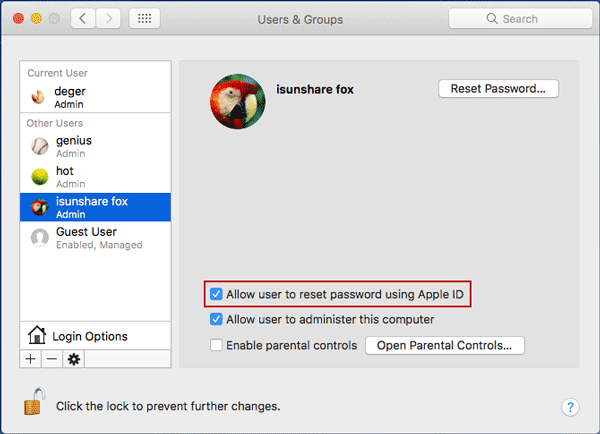

Once it accepts your password it will prompt you with an alert informing you it cannot unlock the login keychain. In this situation of resetting your account password when the computer reboots it will not automatically login. When you reset or change your account password the keychain password remains untouched, conversely you can change your keychain password to be something different than your account password. The keychain password is not directly linked to your user’s password.
/resetpasswordhint-579bc7563df78c3276694786.jpg)
That’s it! You have successfully reset your password.Ī keychain adopts your original password when you first setup your user account. Go ahead and close this dialog and the Reset Password application.įinally, go to the Apple menu and select Restart. We should get a pop up indicating the keychain may need to be updated. Next, enter the new password in both fields (and a hint if you like) and hit “Save”. In the Reset Password application select the drive and account location that we are resetting. Go ahead and close the Terminal window – we won’t need that anymore. A new window titled “Reset Password” should appear. Type “resetpassword” and hit return on the keyboard. There should now be a prompt that says –bash-3.2# or something similar. Once booted to the recovery partition go to “Utilities” in the top menu and select “Terminal”. Select your Recovery HD and click on the arrow beneath it. Next we should see at least 2 drive options.

In order to get to the Reset Password application in 10.7 or 10.8 we will need to boot to the recovery partition by holding down the “Option” key at startup. In 10.7 and 10.8 Apple has removed this option from the menu, however there is an alternative way to get to it. In OS X versions 10.6 and earlier we would just boot to the installation disk, go to Utilities, and open the Reset Password application. Forget that new super secure password you just created?īreathe easy, there is a simple fix.


 0 kommentar(er)
0 kommentar(er)
